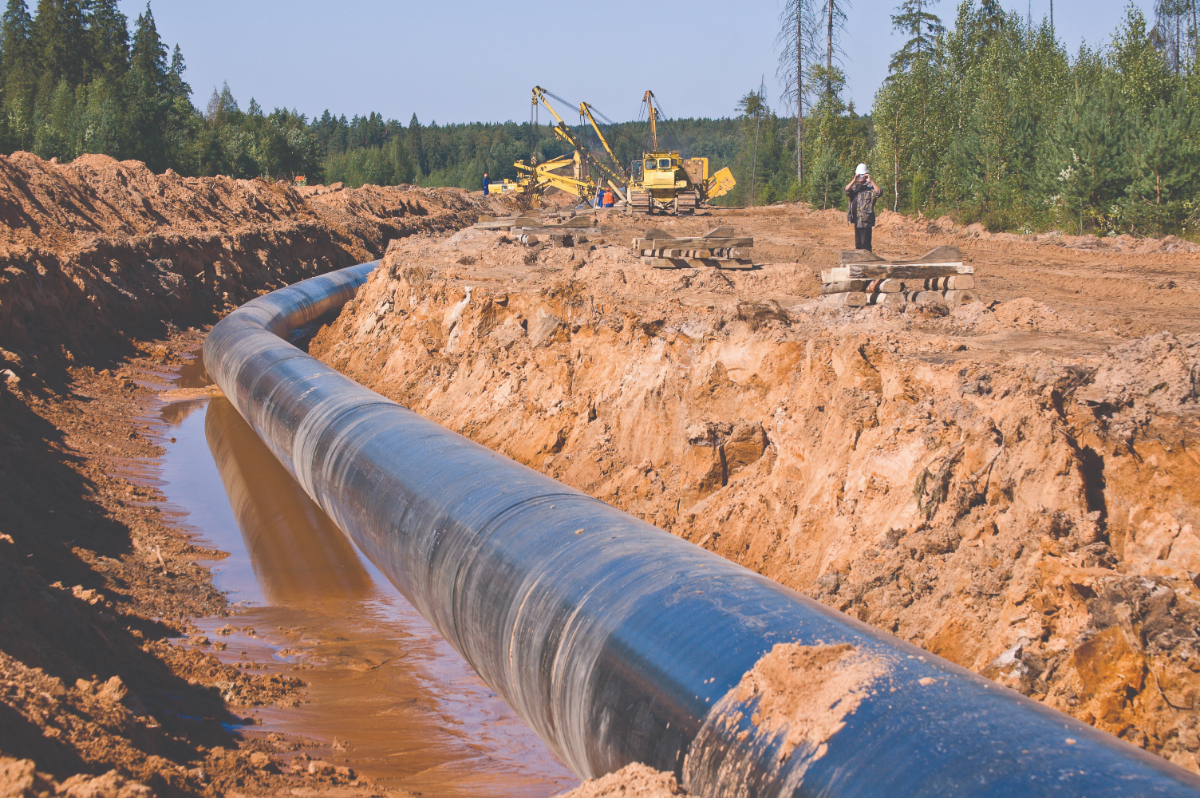Market Snapshot: Repurposing pipelines: a look into present and future trends
Connect/Contact Us
Please send comments, questions, or suggestions for Market Snapshot topics to snapshots@cer-rec.gc.ca
Release date: 2023-11-08
Canada’s pipeline network is constantly evolving due to varying market conditions. These changes can include reversing the flow direction on pipelines or repurposing existing pipelines for new commodities. Today, Canada's pipelines mainly transport hydrocarbons. More pipelines may be dedicated to carrying commodities such as hydrogen and captured CO2Footnote 1 in the future.
Figure 1: Length of CER-regulated pipelines by commodity transported
Source and Description
Source: CER
Description: The Canada Energy Regulator (CER) regulates approximately 10% of the pipelines in Canada, including about 68,000 km of operating pipelines, transporting crude oil, natural gas, natural gas liquids (NGLs)Definition*, refined petroleum productsDefinition*, and other commodities such as carbon dioxide (CO2). This bar chart shows the commodity carried by operating pipelines regulated by the Canada Energy Regulator based on pipeline lengths and primary commodity type. Currently, there are 48,022 km of CER-regulated pipelines natural gas pipelines, 14,596 km of crude oil pipelines, 2,355 km of condensate pipelines, 2,068 km of natural gas liquids pipelines, 893 km of refined petroleum products, 61 km of carbon dioxide pipelines, and 80 km of other pipelines.
As the world transitions to a net-zero emissionsDefinition* futureFootnote 2, new transportation capacity may be needed to move hydrogenFootnote 3, CO2, and other commodities. In Canada’s Energy Future 2023 report, net-zero scenarios projected expanded use of hydrogen in industrial, transportation, residential and commercial sectors and increased capture and permanent storage of CO2Footnote 4. Expanding the transportation capacity for these gasses and other commodities could involve changes in pipeline operations, repurposing existing pipelines, or building new ones.
Blending hydrogen on distribution pipelines
Blending hydrogen with natural gas on existing gas distribution pipelinesDefinition* is an example of how pipelines can be repurposed for new uses. Hydrogen blended into natural gas could reduce emissions from fuel combustion by end-users, such as in furnaces or gas stoves. A few hydrogen-blending pilot projects (listed below) have been initiated in Canada to blend hydrogen into existing natural gas distribution systems.Footnote 5
- As of late 2021, Enbridge Gas is blending 2% hydrogen in the natural gas distribution system in Markham, Ontario (near Toronto). See Enbridge’s clean hydrogen page.
- As of October 2022, ATCO Gas is blending 5% hydrogen in the Fort Saskatchewan (near Edmonton) natural gas distribution system. See ATCO’s Fort Saskatchewan Hydrogen Blending.
Overcoming obstacles in repurposing transmission pipelinesDefinition*
Repurposing pipelines for the transmission of hydrogen or CO2 can cut costs over building new pipelines, according to the International Energy Agency (IEA). However, there are material, capacity, and design challenges, such as hydrogen embrittlementDefinition*, which must be fully evaluated on a case-by-case basis for each pipeline under consideration. Detection of hydrogen leaks may require new technologies and the readiness of end users to receive hydrogen in their natural gas stream. Examples of pipelines that have been converted for hydrogen and CO2 use globally can serve as case studies for future development:
- The West Gwinville Pipeline in the United States was purchased in 2007 as a natural gas pipeline and was converted to carry CO2 for enhanced oil recovery.Definition*Footnote 6
- The Organic Carbon Dioxide for Assimilation of Plants (OCAP) Pipeline in the Netherlands was an oil pipeline converted to carry CO2 and has operated since 2004.Footnote 7
- In 2018, Gasunie converted an existing 12 kmFootnote 8 natural gas pipeline in the Netherlands to transport between 70% and 100% hydrogen.Footnote 9
Hydrogen blending in transmission pipelines is being tested globally,Footnote 10 and companies regulated by the CER are currently researching the feasibility of hydrogen blending in transmission pipelines:Footnote 11
- Alliance Pipeline Ltd. is studying the feasibility of blending hydrogen into an existing natural gas transmission pipeline (5-20%). The expected completion of this study is June 2024.Footnote 12
- NOVA Gas Transmission Ltd. is assessing the suitability of natural gas transportation infrastructure for hydrogen transmission. The expected completion of this project is August 2024.Footnote 13
Pipelines repurposed in the past

Due to changing market conditions, CER-regulated pipelines have been repurposed for other types of hydrocarbons in the past. Some of the examples are given in Table 2 below. CER regulations allow companies to propose repurposing hydrocarbonDefinition* pipelines, following the CSADefinition* standard for Oil and Gas Pipeline Systems. For example, a company must complete an engineering assessment to determine whether a pipeline system is suitable for a new product type like CO2 or hydrogen before making a change. For more information on engineering assessments of existing pipelines and standards relevant for hydrogen and CO2 pipelines, refer to the CSA Petroleum and Natural Gas Standards. The CER also provides guidance in submitting applications to the Commission. The filing manual describes the requirements of an application to the Commission under the Onshore Pipeline Regulations (OPR) section 43.
Table 1: Repurposed hydrocarbon pipelines
| Pipeline | Conversion Projects |
|---|---|
| Keystone Pipeline | Following engineering modifications and regulatory review, over 850 km of TC Energy’s Canadian Mainline Line 100-1 was converted from natural gas transmission service to oil transmission service. It was integrated into the Keystone Pipeline system. |
| Southern Lights Pipeline | The Southern Lights pipeline project included reversing the flow direction on the southbound Enbridge Line 13 crude oil pipeline to carry diluentDefinition* from the United States to supply Alberta’s oilsands. This project broke new ground as the first application to the federal regulator for a pipeline to transport diluent, which at that time was identified as an emerging market. |
| Cochin Pipeline | Cochin Pipeline originally moved NGLs (solely propane afterwards) eastward from Fort Saskatchewan to Windsor, Ontario. In 2012, Kinder Morgan Cochin applied to reverse the Cochin Pipeline’s flow direction and change the type of product to light condensate. This was in response to the increasing demand for condensate to use as a diluent for heavy oil and bitumen produced from the oil sands in Alberta. |
Source
Source: CER
- Date modified:
